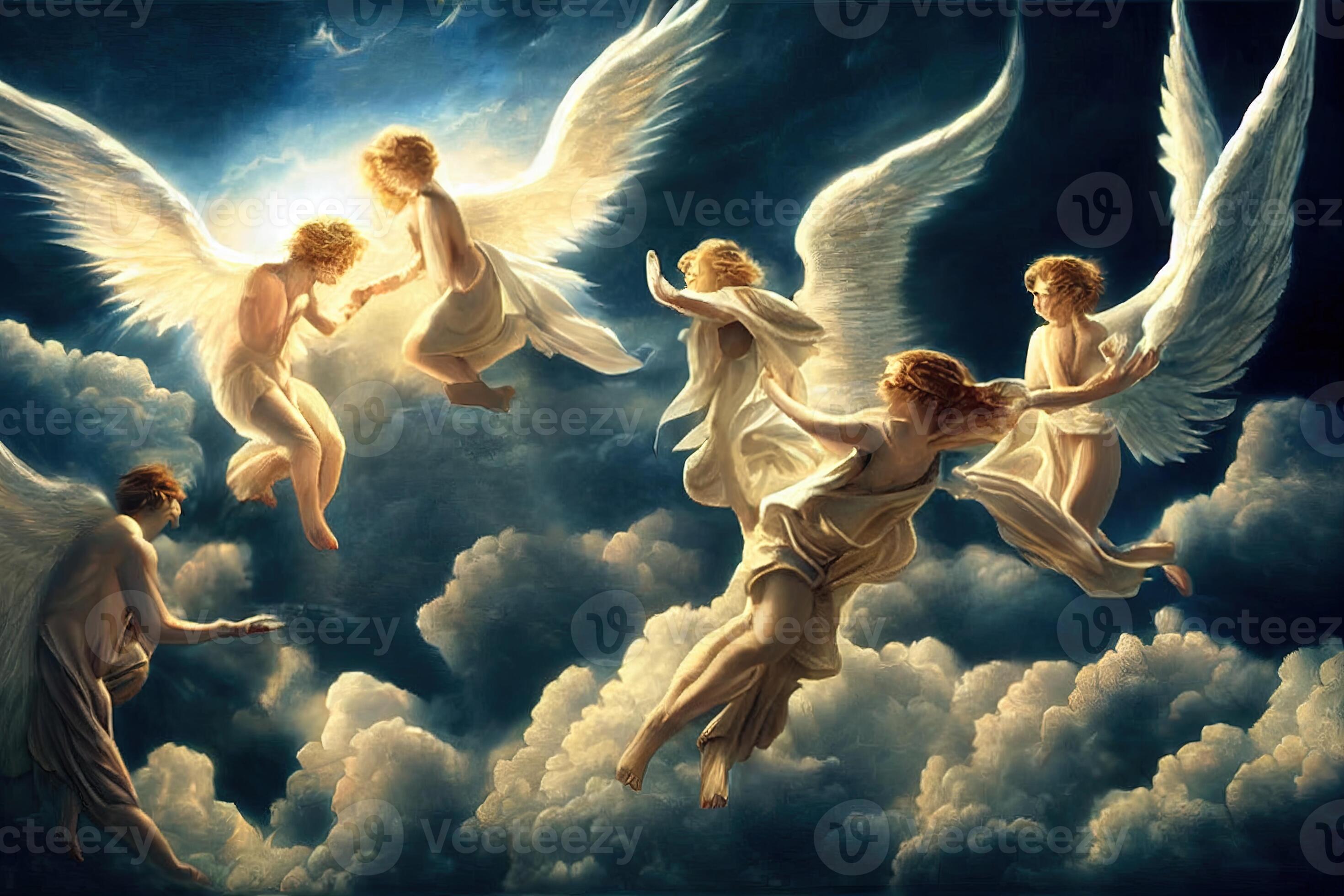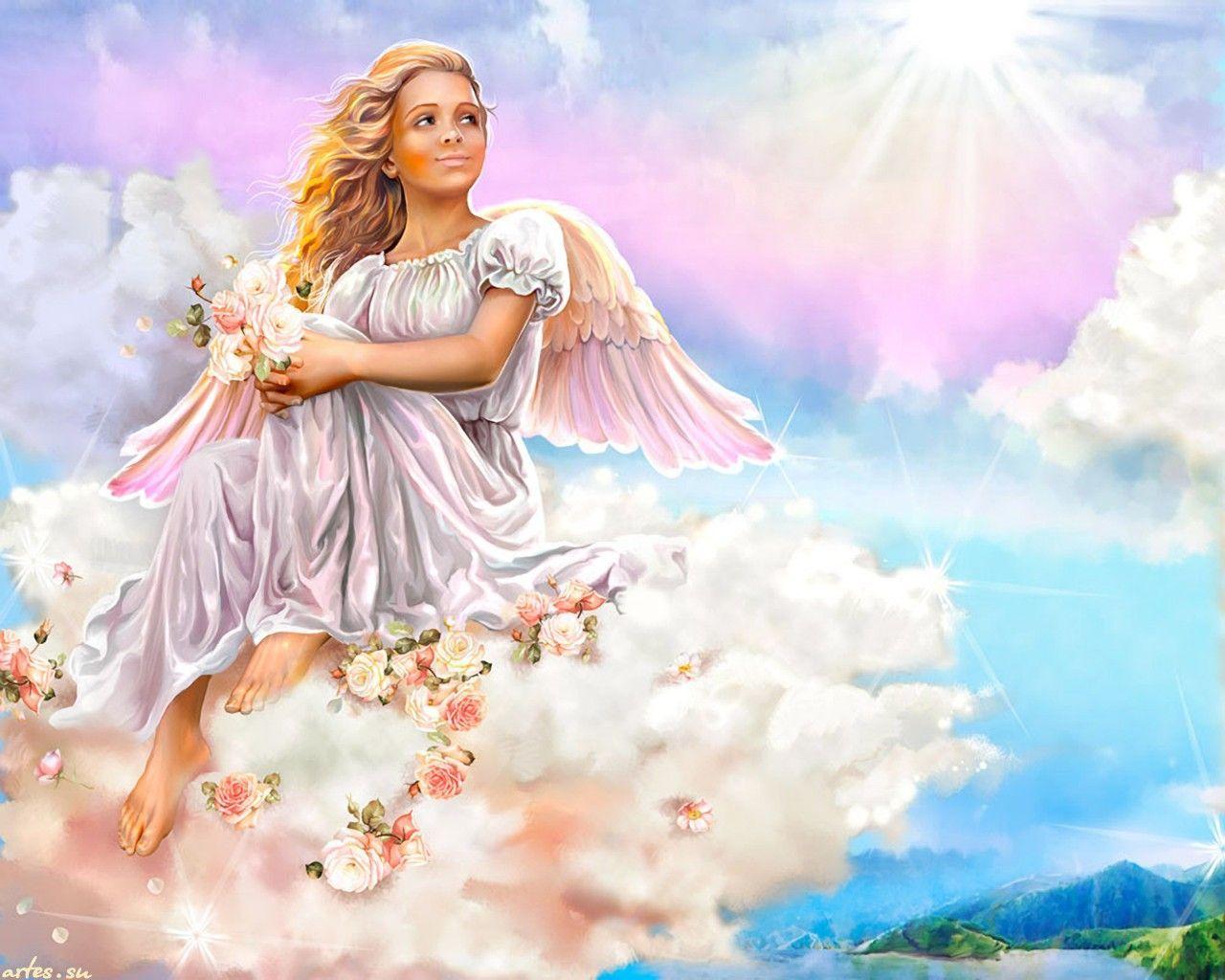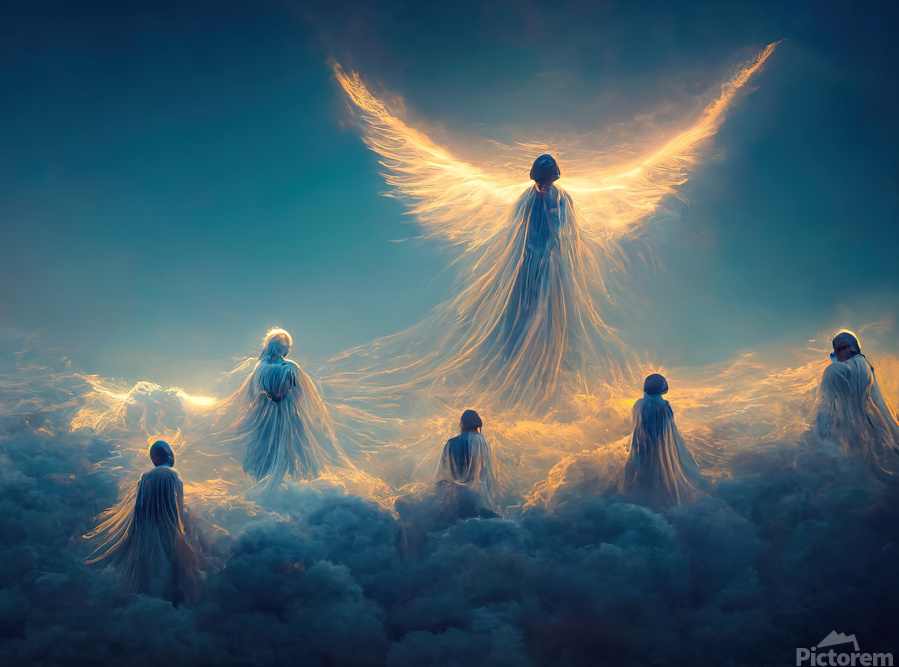Unraveling The Mystery: Your Complete Angels & Demons Book Summary
Have you ever wondered what happens when ancient secrets clash with modern science, all set against the breathtaking backdrop of the Vatican City? Well, if that thought sparks your curiosity, then Dan Brown’s thrilling novel, Angels & Demons, is very likely a story you'll want to explore. This book, a real page-turner, pulls you into a world where history, religion, and cutting-edge physics collide in a desperate race against time. It’s a narrative that keeps you guessing, quite honestly, until the very last moment, making it a favorite for many who love a good puzzle.
So, you're looking for an **angels & demons book summary**, perhaps to refresh your memory or maybe to get a good grasp of the story before you experience it yourself. This particular tale isn't just a simple mystery; it’s a deep dive into the shadowy world of the Illuminati, a secret society many believed to be long gone, and their intense, centuries-old conflict with the Catholic Church. It really explores some big ideas, like the ongoing tension between faith and scientific discovery, and what happens when those two powerful forces come head to head.
This article will guide you through the heart of the story, introducing you to its key players, the shocking plot twists, and the big questions it raises. We’ll also touch on some of the fascinating themes that make this book, which is still incredibly popular today, so compelling. You’ll get a good sense of why this adventure, with its blend of history and high-stakes drama, continues to capture the imaginations of so many readers around the globe, and it’s a bit of a classic, really.
Table of Contents
- Plot Summary
- Key Characters
- Major Themes
- Why Angels & Demons Still Captivates
- Frequently Asked Questions
- Conclusion
Plot Summary
The story kicks off with a shocking discovery at CERN, the European Organization for Nuclear Research, in Geneva, Switzerland. A brilliant physicist named Leonardo Vetra is brutally murdered, and a strange symbol is branded onto his chest. What’s more, a revolutionary and incredibly dangerous substance called antimatter, created by Vetra and his adopted daughter, Vittoria, has been stolen. This antimatter, a very tiny amount, has the potential to create an explosion equivalent to a small nuclear bomb, and it’s set to detonate within hours.
The Vatican's Crisis
Almost simultaneously, the Catholic Church is in a state of deep mourning. The Pope has passed away, and the Conclave, the process of electing a new Pope, is about to begin. However, just as the cardinals gather, four of the most favored candidates, known as the Preferiti, are kidnapped. A chilling message arrives, claiming responsibility for the kidnappings and the antimatter theft: the Illuminati, a secret society thought to be extinct for centuries, has returned. They promise to execute one cardinal every hour leading up to midnight, culminating in the destruction of Vatican City with the antimatter.
Robert Langdon's Call
Faced with this unprecedented crisis, the Vatican, or more precisely, the Swiss Guard, reaches out to Robert Langdon, a Harvard symbologist known for his expertise in ancient symbols and secret societies. Langdon, who, you know, is initially skeptical about the Illuminati's resurgence, quickly finds himself drawn into a terrifying hunt. He teams up with Vittoria Vetra, who is desperate to recover her father's antimatter and understand his death. Their quest takes them deep into the hidden passages and sacred sites of Rome, following a trail of cryptic clues left by the Illuminati, a bit like a twisted scavenger hunt.
The Illuminati's Return
The Illuminati, as the book presents them, were a group of scientists and thinkers who, centuries ago, championed scientific truth against what they saw as the oppressive dogma of the Church. They were persecuted, and their members were supposedly hunted down and killed. Now, someone is using their name and their historical grievances to wreak havoc. Langdon and Vittoria discover that the Illuminati's "Path of Illumination" is a series of four ancient altars of science, each linked to one of the classical elements – Earth, Air, Fire, and Water – and each a site where a cardinal will be executed. It’s a very deliberate and symbolic act of revenge, too it's almost.
The Antimatter Threat
The stolen antimatter is hidden somewhere within the Vatican, ticking down to its explosive deadline. Langdon and Vittoria must decipher the Illuminati's clues, which are often hidden in famous Roman landmarks, sculptures, and texts, to find the altars and, hopefully, the antimatter before it's too late. The stakes are incredibly high; the destruction of the Vatican would not only be a devastating loss of life and art but also a profound blow to the world's spiritual heart. It’s a truly terrifying prospect, you know, just a little.
Race Against Time
Their frantic search leads them through iconic locations like the Pantheon, St. Peter's Square, and the Castel Sant'Angelo, each revealing a piece of the puzzle. They encounter a ruthless assassin, known as the Hassassin, who is carrying out the executions, and they face constant danger from within the Vatican itself, as not everyone trusts them. The tension builds with each passing hour, as the body count rises and the antimatter's timer ticks closer to zero. It’s a truly breathless chase, basically, with very little room for error.
The Grand Reveal
As the climax approaches, the true mastermind behind the plot is revealed, and it’s a shocking twist that completely redefines everything Langdon and Vittoria thought they knew. The motives are far more complex than simple revenge, involving deep-seated beliefs about faith, power, and the future of the Church. The ending is a dramatic showdown that tests Langdon's intellect and Vittoria's courage to their absolute limits, culminating in a desperate attempt to save the Vatican from total annihilation. It’s a very clever unraveling of the mystery, really.
Key Characters
The story is brought to life by a memorable cast of characters, each playing a crucial role in the unfolding drama.
Robert Langdon
Our main hero, Robert Langdon, is a Harvard professor of symbology and religious iconology. He's known for his vast knowledge of history, art, and secret societies. Langdon is a brilliant problem-solver, relying on his academic expertise to decipher the complex clues left by the Illuminati. He’s very much an intellectual action hero, someone who uses his mind more than his fists, and that's quite refreshing, isn't it?
Vittoria Vetra
Vittoria is a brilliant Italian physicist who works at CERN. She is the adopted daughter of the murdered Leonardo Vetra and is deeply invested in recovering the stolen antimatter, which was her father's creation. She's intelligent, determined, and possesses a strong scientific mind, often providing a counterpoint to Langdon's historical perspective. She's quite brave, too, and very capable.
Camerlengo Carlo Ventresca
The Camerlengo is the late Pope's chamberlain, a high-ranking official who takes charge of the Vatican during the interregnum, the period between popes. He is a devout and charismatic figure, deeply respected by the cardinals and the public. He plays a central and, in a way, very surprising role in the unfolding events, and his faith is tested in extreme ways.
Commander Olivetti
As the head of the Swiss Guard, the Vatican's elite security force, Commander Olivetti is initially skeptical of Langdon's theories but eventually recognizes the grave danger facing the Church. He is a disciplined and pragmatic leader, though perhaps a little rigid at times. He's trying to protect the Vatican, obviously, and that's his main goal.
The Hassassin
This mysterious and brutal killer is the Illuminati's instrument of terror. He is a cold, calculating, and highly skilled operative who carries out the kidnappings and executions with chilling precision. His presence adds a constant sense of dread and urgency to Langdon and Vittoria's quest, and he's quite terrifying, honestly.
Major Themes
Beyond the thrilling plot, Angels & Demons explores several thought-provoking themes that give the story its depth and resonance.
Science vs. Religion
This is arguably the central conflict of the book. The Illuminati, as depicted, represent the pursuit of scientific knowledge, often at odds with the Church's traditional doctrines. The novel constantly explores the tension between faith and reason, asking if these two powerful forces can coexist or if they are destined for an eternal struggle. It's a very big question, you know, and the book doesn't shy away from it.
Ancient Societies and Secrecy
The book delves into the allure and danger of secret societies, particularly the Illuminati. It plays on the fascination with hidden histories, coded messages, and clandestine organizations that operate outside the public eye. The idea that powerful groups have been shaping events for centuries is a compelling one, and the book really leans into that, quite effectively.
Faith and Power
The novel examines the nature of faith, both personal and institutional. It questions how power can corrupt, even within a religious context, and how individuals respond when their beliefs are challenged. The characters grapple with their own faith, and the Church itself faces a crisis of authority and belief. It’s a very human struggle, in a way.
The Nature of Angels
While the book uses "angels" in its title and symbolism, it's quite interesting to consider how this portrayal stacks up against what we often hear about these celestial beings. You know, like, our text mentions that angels have greater power than humans and live in the spirit realm, and they're very humble, as Psalm 89:7 shows. It's a bit different from the shadowy figures or ancient symbols you find in the book, isn't it? The Bible talks about faithful angels like Michael, an archangel, and Gabriel, and even about the Nephilim, who were giants born from wicked angels and human women, filling the earth with violence. These biblical accounts paint a picture of beings with tremendous speed and direct access to God, often dispatched to answer prayers. In a way, the book takes these powerful, spiritual ideas and twists them into a thrilling chase involving science and ancient secrets, rather than focusing on their humble, spiritual duties. It's almost as if the book uses the *idea* of angels to represent enlightenment or a hidden path, rather than their traditional spiritual role. For instance, our text also mentions that "chosen angels" were likely assigned special duties in connection with God's people, and that "angels too can travel at tremendous speeds, far exceeding the limits of the physical world." This kind of biblical detail, you know, offers a fascinating contrast to the more symbolic or even conspiratorial use of "angels" within the novel's narrative.
Why "Angels & Demons" Still Captivates
Even years after its initial release, Angels & Demons remains a popular read for many reasons. Its fast-paced plot, filled with cliffhangers and unexpected turns, keeps readers on the edge of their seats. The detailed descriptions of Rome's famous landmarks and the Vatican's hidden corners make the setting almost a character in itself, drawing you into the atmosphere. It’s a very immersive experience, honestly.
Furthermore, the book's exploration of the science-versus-religion debate continues to be relevant. These are big, timeless questions that people still grapple with today. The blend of historical facts, conspiracy theories, and thrilling fiction creates a unique reading experience that is both entertaining and thought-provoking. It's a bit like a historical puzzle wrapped in a modern-day chase, and that's pretty compelling, you know. To learn more about thriller novels on our site, and link to this page mystery stories for more exciting reads.
Frequently Asked Questions
What is the main plot of Angels and Demons?
The main plot revolves around Robert Langdon, a symbologist, who is called to the Vatican to help stop the Illuminati, a secret society, from destroying Vatican City with stolen antimatter. They are also kidnapping and executing cardinals during the papal conclave. It’s a race against time to decipher clues, save lives, and prevent a catastrophic explosion, so, quite a lot going on.
Is Angels and Demons a true story?
No, Angels & Demons is a work of fiction. While it incorporates real historical figures, organizations like the Illuminati, and actual landmarks, the plot, characters, and events are entirely imagined by the author, Dan Brown. It’s a very clever blend of fact and fantasy, you know, but definitely a story.
What is the significance of the Illuminati in Angels and Demons?
In the book, the Illuminati are portrayed as an ancient secret society of scientists who were persecuted by the Catholic Church. They seek revenge on the Church for past injustices. Their return in the story represents the ongoing conflict between science and religion, and they are the driving force behind the kidnappings and the antimatter threat. They're basically the antagonists, but with a very complex backstory.
For additional reading on historical secret societies, you might find this article interesting: Britannica's overview of secret societies.
Conclusion
So, as we’ve seen, the **angels & demons book summary** reveals a story packed with suspense, intellectual puzzles, and a deep dive into the historical tension between faith and scientific discovery. Dan Brown truly crafts a narrative that keeps you guessing, twisting and turning through the hidden corners of Rome and the Vatican. It’s a story that, you know, makes you think about bigger ideas while keeping your heart pounding with every page. If you enjoy a good mystery that blends history with high-stakes action, this book very much delivers a memorable experience, and it's quite a ride.

ilustración de ángeles en cielo 21983093 Foto de stock en Vecteezy

Angels in Heaven Wallpapers - Top Free Angels in Heaven Backgrounds

Angel Pictures In Heaven